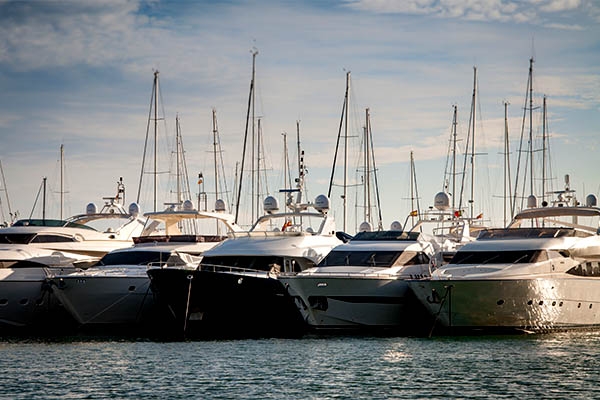It’s Mammon’s way of saying, “Gotcha.”
If you have enough money, you can’t have enough time.
That thought occurred to me while visiting a marina in Fort Lauderdale and contemplating our collective armada of toys. It’s gigantic, almost unimaginable, and we’re adding to it all the time.
In Fort Lauderdale you can see acres of yachts at rest, awaiting use by their owners. We’re talking about millions of dollars here, millions of dollars an acre if water was measured in acres. And it’s just floating there, empty. Some boats are used on weekends. Others less. Often, the owners are busy elsewhere, making money.
Fort Lauderdale isn’t unique. You can duplicate the sight of seldom-used boats in harbors across the country: Boston and the Long Island Sound in the Northeast, San Diego and San Francisco in California, Puget Sound in the Northwest. And that’s without touching a single lake in Minnesota. According the National Marine Manufacturers Association, our “fleet” numbered 16.3 million boats ranging from rowboats to major yachts. In 1997 we increased the fleet by 11,700 jet boats, 200,000 outboard boats, 92,000 sterndrive boats, and some 6,300 cruising boats.
Drive any highway in the South or Southwest at this time of year and you’ll see long convoys of “land yachts”— the recreation vehicles and motor homes of Snowbirds from the north. They migrate to Florida, South Texas, Arizona, and New Mexico every winter. About one million recreation vehicles with a total value of about $25 billion have been sold in the last four years alone.
And that’s just the big stuff. According to the Sporting Goods Manufacturers Association, manufacturers shipped some $295 million of archery related goods in 1997— at wholesale value. Not to mention $190 million in sleeping bags, $311 million in scuba and skin diving equipment, $173 million in snowboards, and $390 million of in-line roller skates.
In America, Santa Claus is a very busy guy.
All of which raises a question: Having demonstrated that we have the money, can we find the time?
The answer, sadly, is that most of us won’t.
Much of this equipment— whether it is a $49 pair of roller blades or a $2 million yacht— will get much less use than its owner intended. This will happen for a simple reason: the biggest problem that most Americans now face isn’t the scarcity of income. It is the scarcity of time.
How do you gain time? By working less.
Fat chance.
You can understand the conundrum we face by examining the work of economist Steffan Burenstam Linder. In “The Harried Leisure Class”, published in 1970, the prescient Linder showed that we were heading toward a collision between “work time” and “time in personal work” because growing productivity would increase incomes and allow us to consume more. Linder showed that consumption in an affluent society was limited by our scarcest resource: time.
The more we produce in goods and services, the more time we need for personal work and consumption— if we are to use or experience the goods and services.
However, while productivity has risen nicely since 1970, the work week has actually increased for most workers. As a result, our time for personal work and consumption is being squeezed hard, even as our closets and garages fill with unused toys.
Is there a cure?
No, not yet. But this is what’s called “a Cadillac Problem.” With most living Americans having worried about employment and jobs most of their lives, this is a problem to be savored before it is solved.
Photo: Mali Maeder
(c) Scott Burns, 2022
